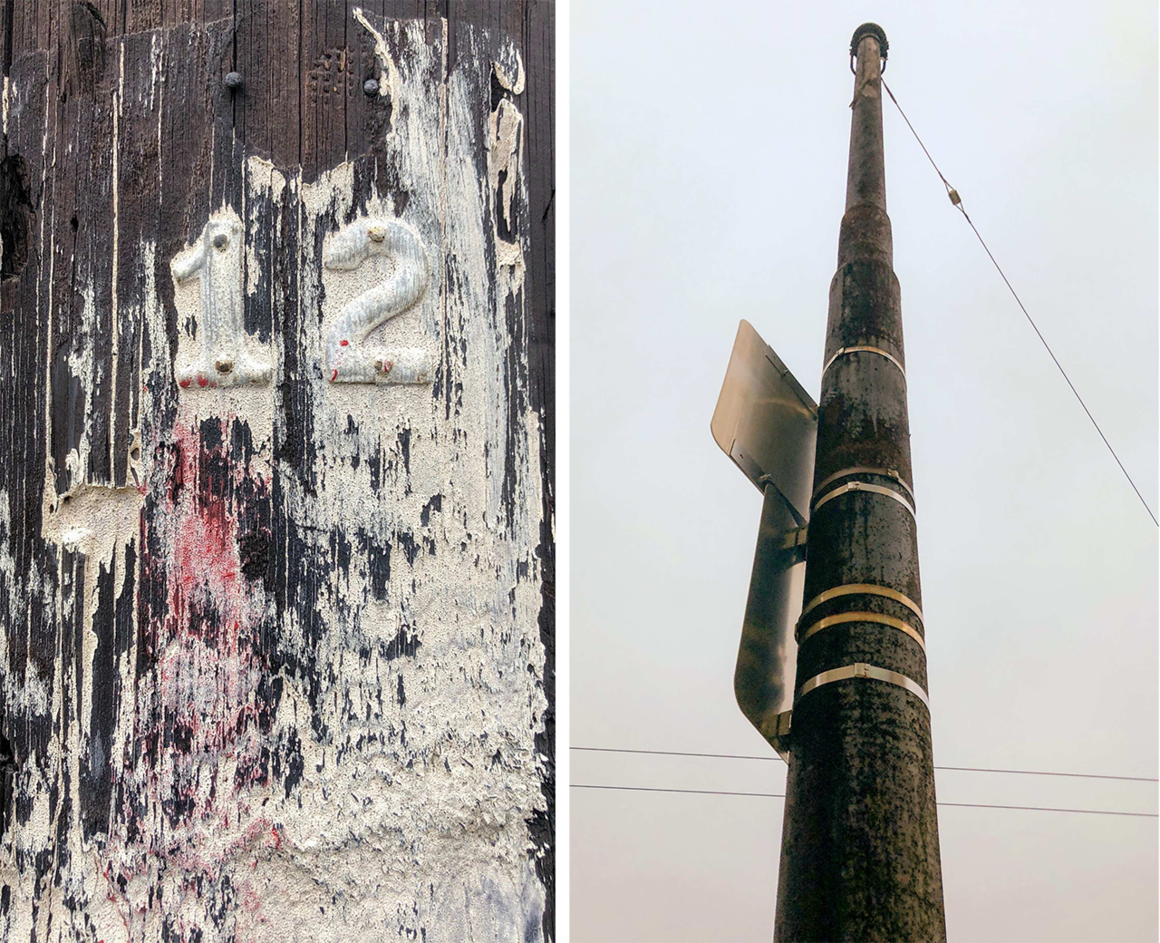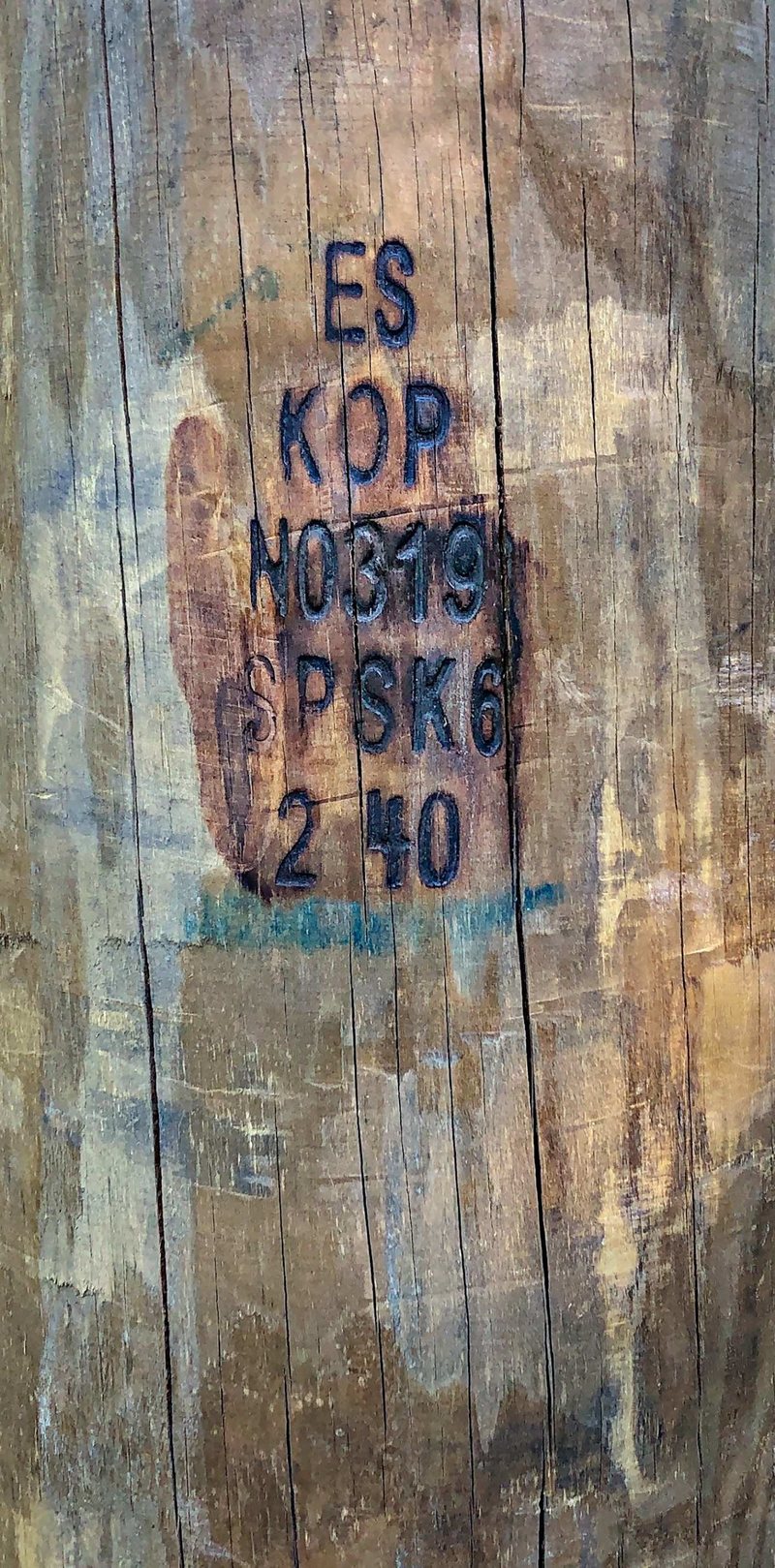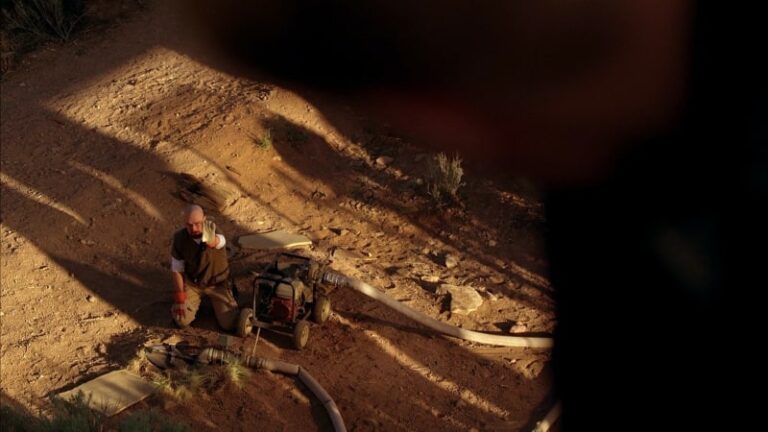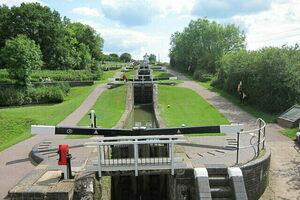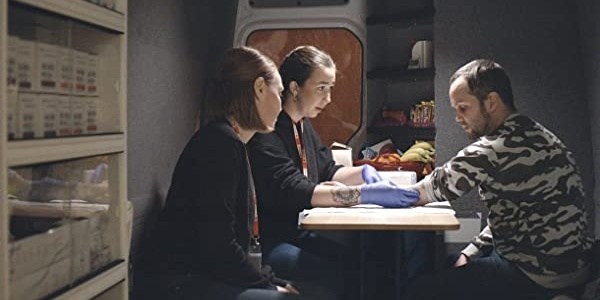Meet the Artist Who Does Extreme Close-Ups of Utility Poles
The first utility poles in America weren’t really supposed to be there. It was 1843, and telegraph inventor Samuel Morse was granted $30,000 by the U.S. Congress to construct a line that could send messages more quickly than had ever been possible before. Morse started by trying to bury the cable to carry the messages underground, from Washington, D.C., to Baltimore, about 40 miles away—but it didn’t work. Running short of time and money, Morse and his team desperately decided to hang the telegraph wire above ground on posts and trees. In 1844, once the wire was strung up on hundreds of wooden poles, Morse successfully transmitted the words “What hath God wrought?” in his eponymous code to a fascinated audience of politicians. From there, the march of wooden utility poles swiftly spread across the East Coast, and eventually the entire country.
Today the ubiquitous utility pole is less technological marvel than easily ignored fixture of life or outright eyesore. However, artist Rosamond Purcell, who first started photographing these utilitarian bits of infrastructure in her hometown of Cambridge, Massachusetts, in 2017, finds their weathered and transient nature evocative. She explained in the Od Review, “Poles have complicated surfaces—wood attracting staples and nails over generations of such notices, iron covered with paint and stickers, and heart-breaking notes about lost pets.” Entranced by their visual impact, she added, “A few inches across becomes a landscape.” When her eye catches a compelling composition on a street pole—perhaps a figure created by ambient light or a sign sadly faded by sun and rain—she shoots quickly with her iPhone. “Small landscapes and color effects are created by even the slightest weathering or damage to iron, pine, or stainless steel poles (used for streetlights),” she writes in an email. The artist, whose past work includes photographing the unexpected poetry of objects in a Maine junkyard and recreating an ancient cabinet of curiosities, has always been fascinated by the unsettling beauty of decay, how nature and time intersect with the human-made, especially the mundane.
Atlas Obscura spoke with Purcell about her hometown, anonymity, and the sadness of lost pets signs, and has a selection of her photos.

What made you start taking a closer look at utility poles as a subject for your photos?
Many decades passed before I noticed the diversity of aesthetic aberrations that occur on the surfaces of ordinary telephone and trolley poles. Not only have I been devoted to the effects of weathering for a long time, but because Cambridge, where I was raised, is also city of transients from all over the world—students, visiting professors, interim professors—who, as they slow-ghosted through, left ephemeral traces in their wakes. In Harvard Yard, on modest bulletin boards were posted notices for concerts, lectures, personal messages, stuck up, torn, faded, and renewed throughout every season of the academic year. Such graveyards of events past are marked by staples upon staples.
In recent years wooden telephone poles around Cambridge have become to some degree curved bulletin boards for notices of upcoming events, available lodging, portraits of pets lost or found. The expression of the pet owners’ hopelessness and sorrow appears in the worn-away “MISSING Cooper Anderson” (who looks like a Yorkie). There is a blue inked message along edge of paper: “Please Bring Me Home.” To add to the sense of loss, the phone number or address of owner has been washed away. Sometimes the information is legible but there are warnings: “Lost Cat; may or may not answer to the name ‘Melissa,’’’ or a pole may bear a mute memorial tribute to a traffic victim—pet or person.
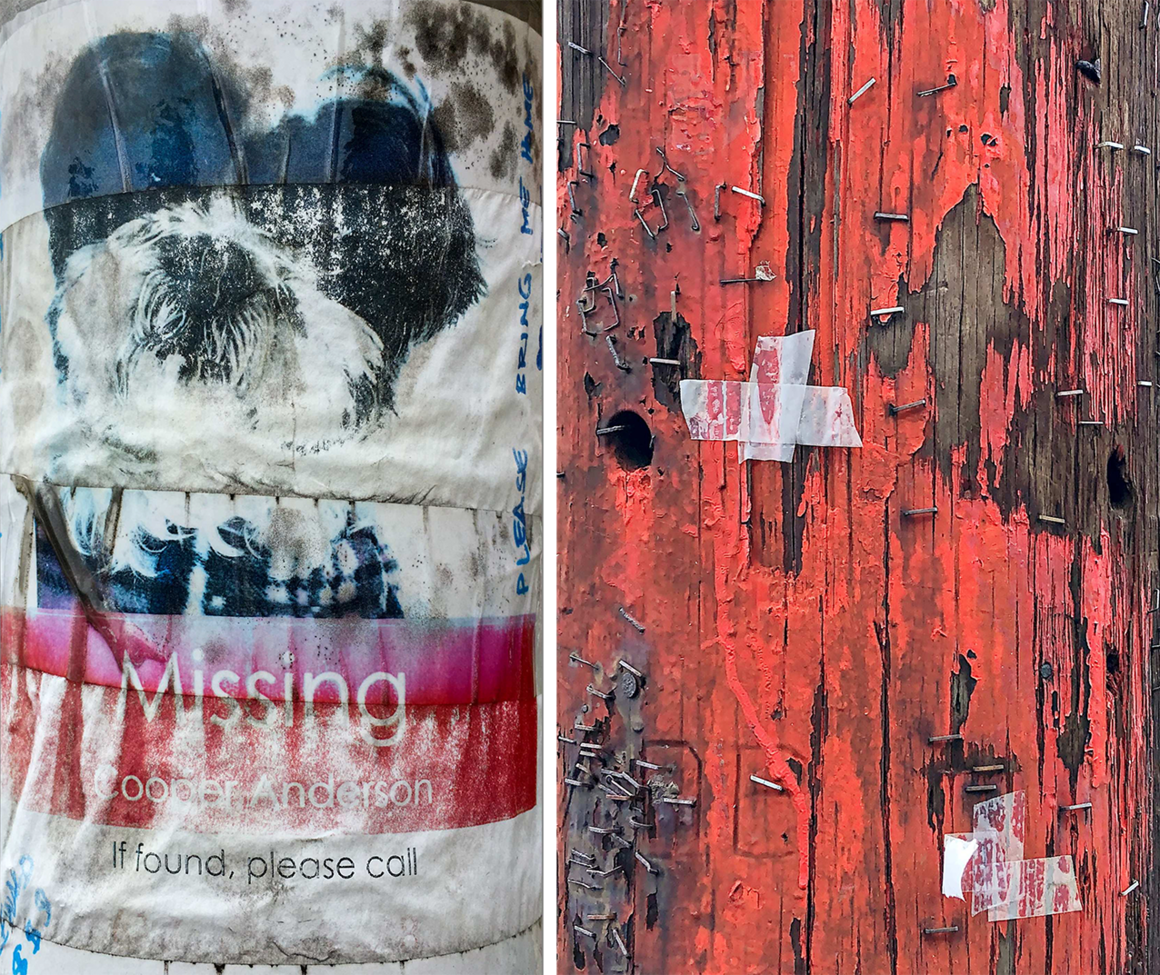
What do you know about the origins or history of the utility poles in your area?
In the 1950 and 1960s, when we were in school, the poles were either wooden for telephone lines, or painted iron to support the wires that brought power to the trolley buses. Tracks for the older trolleys now lie buried, but trackless trolleys still run in Cambridge. Each type of utility pole weathers in different ways and at different rates. Currently a number of older poles are sagging, snapping, and some are crippled, tied to supports, some feet off the sidewalk, needing a block or bricks to hold gravity at bay.
Wooden poles used to carry telephone and electrical wires came from yellow pine forests (in South Carolina and Georgia). Some may grow to 60 feet tall before they have branches. This is also true in northern New Hampshire where, two summers ago, my husband, Dennis, and I began to look along trails where poles and trees intermingle.
It is a landscape where poles turn back into trees and, as our son said, “The poles are fingerprints of the place,” as if they came from native northern trees from beginning to end.
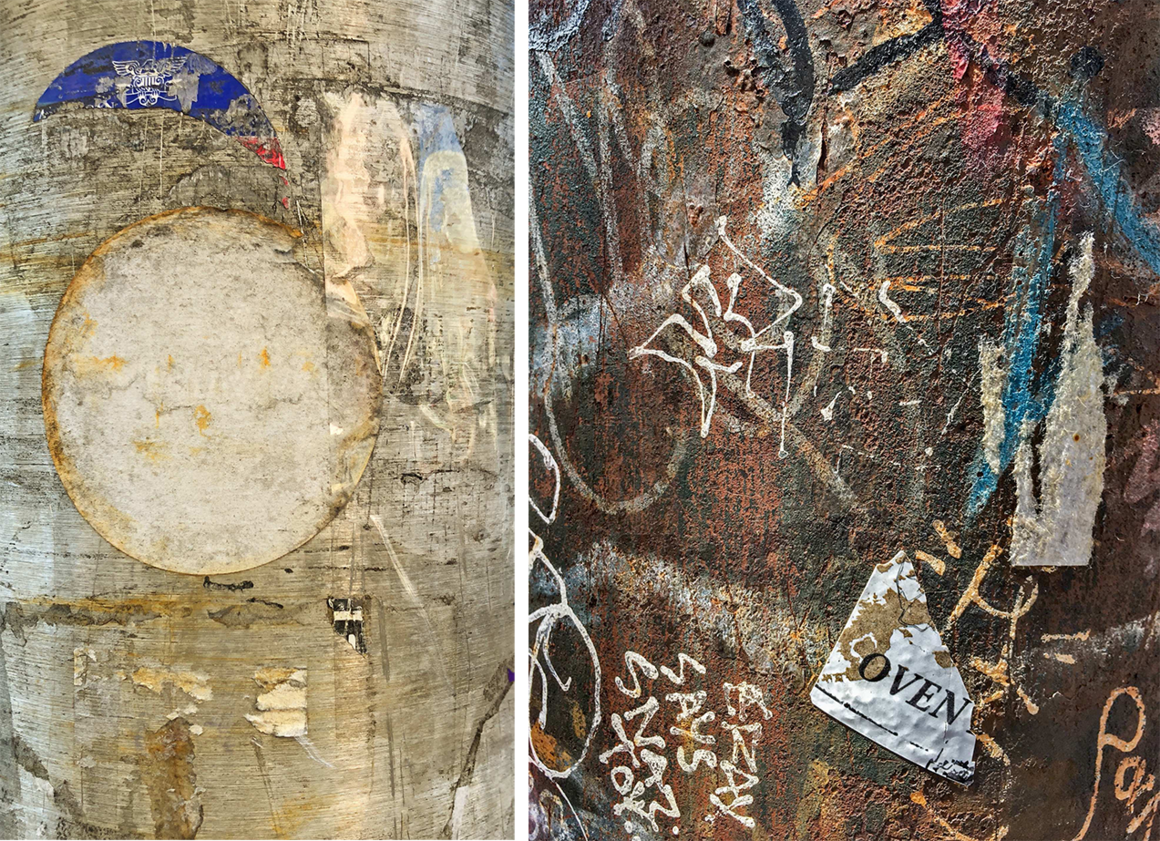
Has anything surprised you while shooting the poles?
The most surprising thing is that no one seems to pay the slightest attention to an older person with an iPhone. I am as anonymous as the pole itself. I usually see the photograph ahead of time and from a distance; this sport has more to do with recognition than with lengthy deliberation. I depend on that seal of immunity that forms around the photographer and the subject.
You’ve taken so many photos of street poles. Do you have a favorite?
Many favorites.
There’s one that shows the passing of time, the posting of an available apartment and the wearing away of the advertising details of a living room, a memento chain, many used staples. This pole is outside a popular coffee shop. A few months ago a full-page rant appeared on it, posted by a female abandoned by a self-help genius who had inexplicably fled. The next time I checked, the paper was gone.
This interview has been edited for clarity and length.
